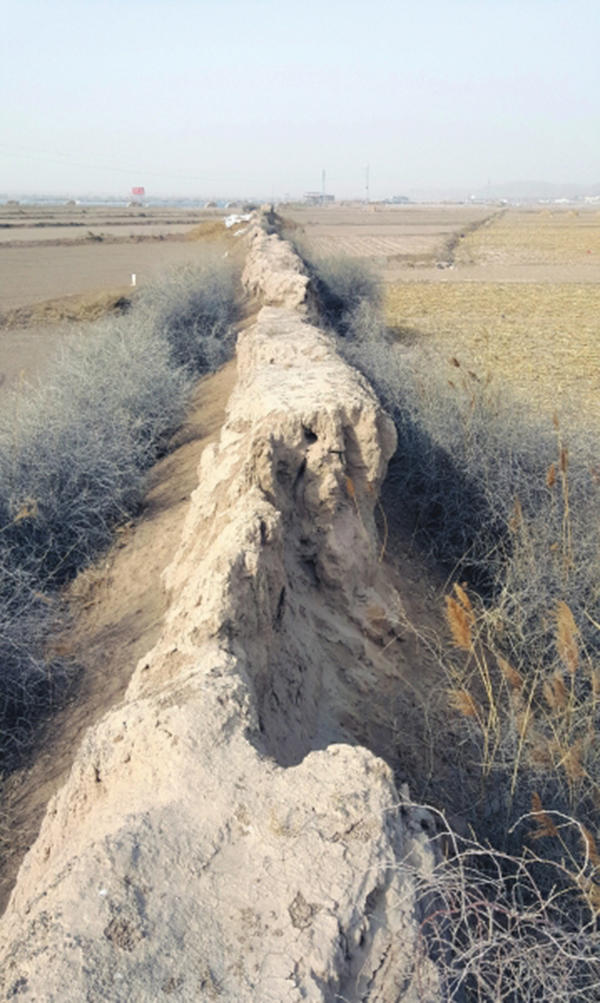Stretching over about 90 kilometers, the Jingtai area of the Great Wall, built in the MingDynasty in 1599, is now at risk of being swallowed by farmland.
Unlike eastern parts of the Great Wall in Beijing and Hebei, which were mostly constructedusing stones and brick, sections in Gansu were largely built using soil and earth. Aftercenturies of erosion from wind and sandstorms, they have become extremely fragile.
Some parts of the wall were reduced to soil ridges due to large-scale farming, and somewere used as part of a courtyard to fence in livestock and cultivate dried grass. In addition,the wall has sprouted grass in some places that see little human activity.
The wall was severely damaged in the 1970s and '80s, when farmland was expandedexcessively, locals explained. Protection and renovation of the wall restarted when peoplebegan paying more attention to historical and cultural sites. In 2006, the wall was putunder state protection. In 2015, Gansu established a protection zone spreading 20 metersacross both sides of the wall.

